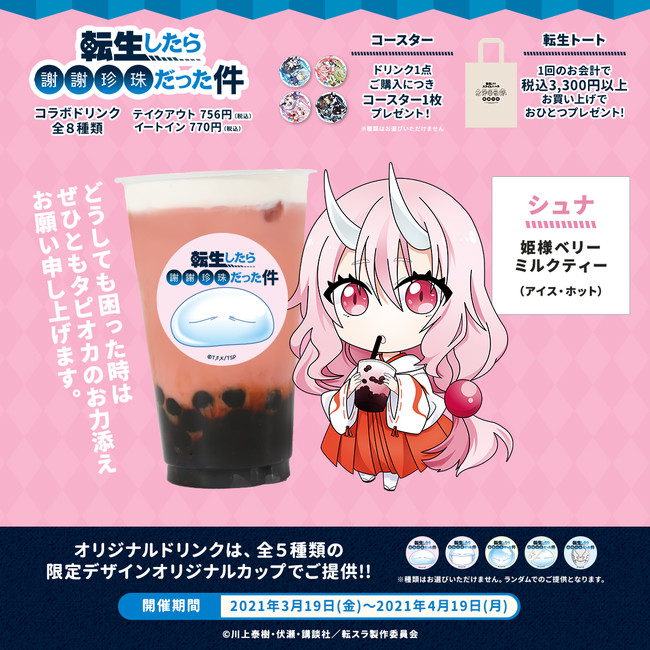yperic
Greater Supremacy Member
- Joined
- Jan 14, 2003
- Messages
- 82,846
- Reaction score
- 30,633
What are the factors that contribute to the price increases of bubble tea in Singapore?

Find out why prices of bubble tea in Singapore are on the rise. (PHOTO: Getty) (insjoy via Getty Images)
SINGAPORE – Bubble tea has surged in popularity across Singapore in recent years, becoming a staple in the city-state's diverse appetite for food and beverages.
However, along with its growing popularity, bubble tea prices have also been on the rise. Over the past five years, prices among some of the top bubble tea brands in Singapore have increased by more than S$1 for a standard medium-sized pearl milk tea.
What are the factors driving the price of bubble tea higher, and why do consumers continue to patronise bubble tea stores despite increased prices?
According to a research report released in August 2022 by venture builder Momentum Works, Southeast Asians spent a total of US$3.66 billion (about S$4.92 billion) on bubble tea in 2021. The Singapore bubble tea market, being the region's smallest in terms of population but with higher spending power, had an annual turnover of US$342 million (about S$460 million) in 2021.
Bubble tea's appeal lies in its diverse range of flavours and toppings, as well as the distinctive chewy tapioca pearls, or "bubbles", that give the drink its name. The ability to fully customise the drink's ingredients allows for a more personal drinking experience.
Bubble tea has become a cultural phenomenon among youths with the rise of social media platforms, such as TikTok and Instagram.
"There are many reasons to love bubble tea. It's like a perk-me-up drink after a tiring day at work. Sometimes, it's a catch-up with friends over BBT, and sometimes, it's a reward after a workout," said 29-year-old social media manager Amber Lim, a bubble tea fan.
For others, like 34-year-old digital consultant Lee Wan Theng, drinking bubble tea has become a daily routine that's hard to break, despite its continuous price increase over the years.
"The ability to tailor it to my tastes – eliminating sugar, forgoing ice, adding or omitting milk, and choosing from various toppings – really made it stand out," said Lee, who said she was introduced to the drink by her Taiwanese mother in her childhood.
Furthermore, the report's analysis showed that costs were highly correlated with supply chain, store, and headcount efficiency. Price movements in any of these factors, which can be impacted by economic and market conditions, are likely to result in higher bubble tea prices for consumers.
Find out why prices of bubble tea in Singapore are on the rise. (PHOTO: Getty) (insjoy via Getty Images)
SINGAPORE – Bubble tea has surged in popularity across Singapore in recent years, becoming a staple in the city-state's diverse appetite for food and beverages.
However, along with its growing popularity, bubble tea prices have also been on the rise. Over the past five years, prices among some of the top bubble tea brands in Singapore have increased by more than S$1 for a standard medium-sized pearl milk tea.
What are the factors driving the price of bubble tea higher, and why do consumers continue to patronise bubble tea stores despite increased prices?
Why is bubble tea so popular?
Originating from Taiwan in the 1980s, bubble tea, also known as pearl milk tea or boba tea, has seen its popularity explode worldwide.According to a research report released in August 2022 by venture builder Momentum Works, Southeast Asians spent a total of US$3.66 billion (about S$4.92 billion) on bubble tea in 2021. The Singapore bubble tea market, being the region's smallest in terms of population but with higher spending power, had an annual turnover of US$342 million (about S$460 million) in 2021.
Bubble tea's appeal lies in its diverse range of flavours and toppings, as well as the distinctive chewy tapioca pearls, or "bubbles", that give the drink its name. The ability to fully customise the drink's ingredients allows for a more personal drinking experience.
Bubble tea has become a cultural phenomenon among youths with the rise of social media platforms, such as TikTok and Instagram.
Why do Singaporeans love bubble tea?
Bubble tea's popularity in Singapore is undeniable, with over 60 bubble tea brands islandwide as of 2022. According to the National Library Board, the first bubble tea shop in Singapore, a cafe called Bubble Tea Garden, opened in Marina Square in 1992."There are many reasons to love bubble tea. It's like a perk-me-up drink after a tiring day at work. Sometimes, it's a catch-up with friends over BBT, and sometimes, it's a reward after a workout," said 29-year-old social media manager Amber Lim, a bubble tea fan.
For others, like 34-year-old digital consultant Lee Wan Theng, drinking bubble tea has become a daily routine that's hard to break, despite its continuous price increase over the years.
"The ability to tailor it to my tastes – eliminating sugar, forgoing ice, adding or omitting milk, and choosing from various toppings – really made it stand out," said Lee, who said she was introduced to the drink by her Taiwanese mother in her childhood.
Factors influencing the prices of bubble tea in Singapore
There are several factors that contribute to the increasing prices of bubble tea in Singapore. According to the "Bubble Tea in SEA" report by Momentum Works, which analysed the cost breakdown of operating a bubble tea store, about 80 per cent of a bubble tea's store's expenses can be attributed to raw ingredients, storage, delivery, location rental and labour.Furthermore, the report's analysis showed that costs were highly correlated with supply chain, store, and headcount efficiency. Price movements in any of these factors, which can be impacted by economic and market conditions, are likely to result in higher bubble tea prices for consumers.

